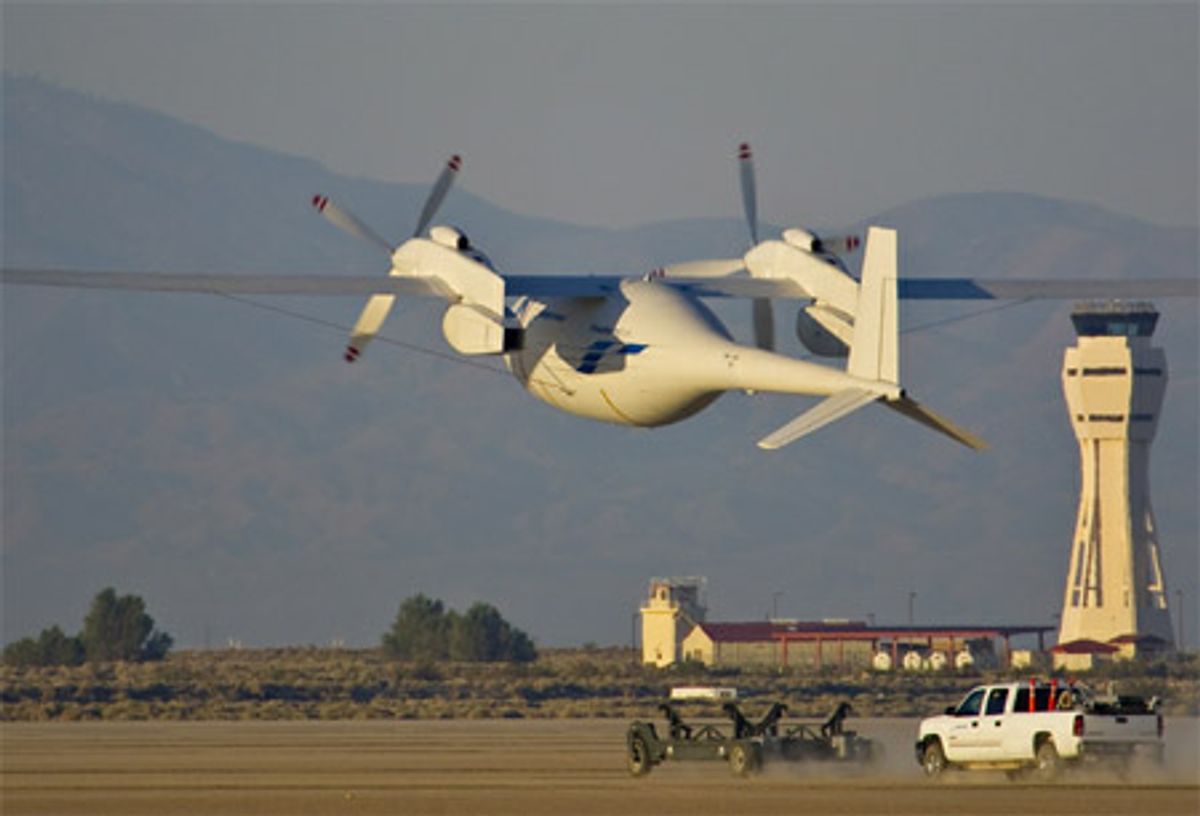Most unmanned aerial vehicles are sleek, streamlined affairs that look like they belong in a science fiction movie. Not so with Boeing's Phantom Eye UAV: it's got long skinny wings sticking out of a body shaped like a chronically overfed gerbil. This is because it's stuffed full of hydrogen, allowing it to stay airborne for days at a time.
Phantom Eye is not a small aircraft: it's got a wingspan of 45 meters, and that gigantic belly it's got going on holds two about-half-as-gigantic tanks of hydrogen. With 200 kilograms of payload, Phantom Eye relies on all of this hydrogen to keep its engines and electronics running for days. Four days, that is, non-stop without having to land. Phantom Eye cruises up at 65,000 feet (about 20,000 meters), which is well above weather and any other aircraft, and Boeing plans to deploy it as a long-duration surveillance platform.
Here's a video of the test flight: to save weight, Phantom Eye lands on skids, so to take off, it's got a little trolley-thing that it sits on top of until it gets airborne:
Now isn't that the most adorable unmanned aerial vehicle take-off that you've ever seen? I just want to give this thing a great big hug, with it's big chubby belly and little tiny trolley. Aww!
This first test flight lasted only 28 minutes, with Phantom Eye reaching about 4,000 feet at a speed of 150 knots, all autonomously. If the test program works out, Boeing plans an even larger production version of the aircraft that'll be able to carry four times as much payload and stay aloft for ten days, meaning that just a few of them could team up to provide constant surveillance anywhere in the world for literally years at a time.
[ Boeing ]
Evan Ackerman is a senior editor at IEEE Spectrum. Since 2007, he has written over 6,000 articles on robotics and technology. He has a degree in Martian geology and is excellent at playing bagpipes.




